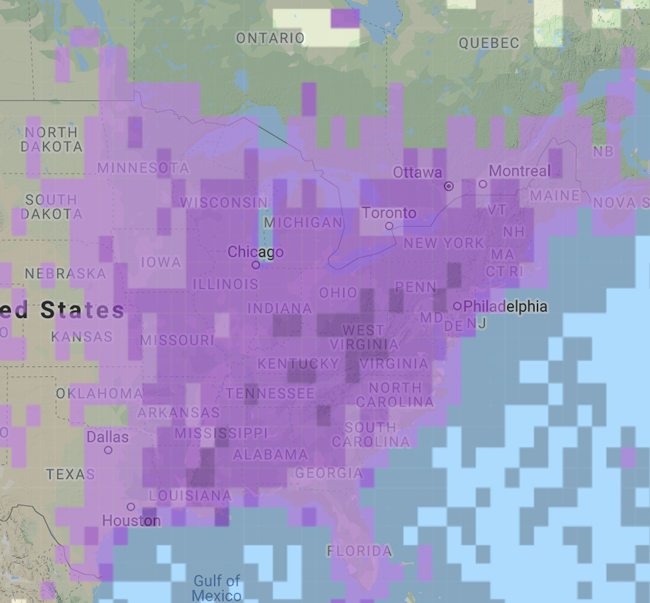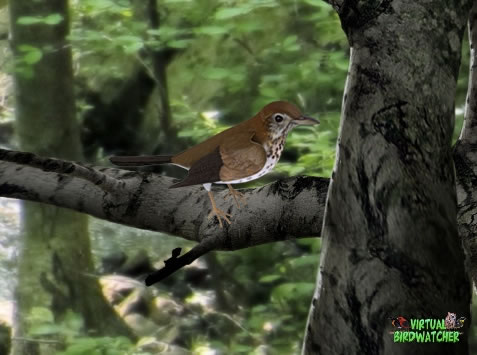Wood Thrush
From the darkest depths of the forest, just before twilight, comes the enchanting melody of the Wood Thrush. Measuring about eight inches in length, the Wood Thrush is brown above and white below. Its white underparts have black spots. The Wood Thrush looks very similar to several other Thrushes - all of which have beautiful songs, and is related to robins and bluebirds.
You have not experienced nature unless you've entered the deciduous woodlands in the eastern United States, just before twilight, and listened to the beautiful concert performed by nature's foremost songster - The Wood Thrush. The Wood Thrush is more easily heard than seen, and although its song was unmistakable in the cool mornings at Latodami, I only saw the secretive birds once or twice. I vividly remember spring and summer nights in my own neighborhood in which the song of several Wood Thrushes turned the coming darkness into a special event. As time passed on my childhood, however, the flute-like choruses grew more and more infrequent, until they were gone. Unfortunately, the same scenario is plaguing neighborhoods through the eastern and central United States. Wood Thrush populations have declined significantly due to habitat destruction and cowbird parasitism. Wood Thrushes are frequent victims of the opportunistic cowbird - which lays its eggs in the Wood Thrush nest. As a result, baby Wood Thrushes die because they cannot compete for food with the aggressive cowbird chick.

